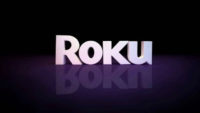In Q1, Roku reported a 35 percent jump in active accounts, to 53.6 million, with revenue up 79 percent year-over-year to $574.2 million, beating Wall Street analysts’ expectation of $490.6 million. Those analysts also predicted that Roku would lose money in Q1 but instead it reaped an operating income of $75.8 million, up from $55.2 million in the red a year ago. Platform revenue increased 101 percent to $466.5 million. Total streaming hours on all Roku devices also reached 18.3 billion hours, a 49 percent YoY increase.
Deadline reports that Roku chief financial officer Steve Louden noted that “comparison between the fourth quarter of one year and the first quarter of the next is difficult because of the holidays.”

“Q1 is usually significantly slower,” he said. He also explained that COVID-19, “which hit the company’s core U.S. business toward the end of the first quarter in 2020,” was another factor to consider. In Q1 of 2019, “account growth was less than half the 2.4 million additions of the current-year first quarter, indicating no slowdown, in the company’s view.”
The company also reported that, “average revenue per user reached $32.14, up 32 percent … [and that] 85 percent of the audience reach to viewers aged 18 to 49 on the Roku Channel was unduplicated with traditional TV.”
Roku, which gave a virtual presentation at the IAB NewFronts, also recently purchased Nielsen’s advanced video advertising unit, original programming from Quibi and the producer of home-improvement mainstay ‘This Old House’.” The company plans to add “a steady supply of originals” to its existing 50 subscription streaming services to “benefit from an ongoing shift of ad dollars from traditional linear TV to streaming.”
Roku recently ascended to the position of the “leading streaming provider in the U.S. … Befitting that status, it has had tension with distribution partners at times, the latest being YouTube.” Although existing customers can access YouTube TV from its channel stores, new ones cannot.
Roku senior vice president and general manager Scott Rosenberg noted that, “the company is objecting with Google over data, not dollars,” having previously complained that “Google has manipulated search results and sought to control user data.”
In its letter to shareholders, Roku stated that, “gross profit was up 132 percent YoY to $326.8 million.” The company also raised about $1 billion through an At-the-Market (ATM) stock offering.
Regarding content, Roku customers now have “more choices than ever for premium DTC (direct to consumer) services via the Roku platform, including Discovery+, Disney+, HBO Max, Paramount+, Peacock, Amazon Prime Video, Apple TV+, Hulu, and Netflix.” The company said its Q2 outlook is “for robust growth with total net revenue of $615 million at the midpoint (up 73 percent year-over-year) and total gross profit of $300 million at the midpoint (up 104 percent year-over-year).”
Related:
Roku Is Offering a ‘Pretty Good Entry Point’ After Blowout Earnings, Trader Says, CNBC, 5/10/21
Roku Showcases Originals Powered by Quibi, This Old House Deals in NewFronts Pitch, Deadline, 5/3/21
Google Goes Nuclear Against Roku by Adding YouTube TV to the Main YouTube App, The Verge, 5/7/21
Roku vs. Google: Who’s Really to Blame in This Battle That Only Stands to Hurt Customers?, 9to5Google, 5/10/21

No Comments Yet
You can be the first to comment!
Sorry, comments for this entry are closed at this time.